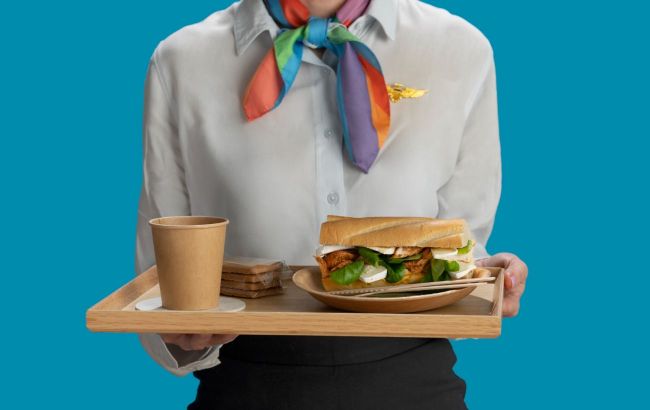Why airplane food seems tasteless: Explanation
 Why food tastes different on a plane (photo: Freepik.com)
Why food tastes different on a plane (photo: Freepik.com)
On airplanes, food often seems bland, dry, or simply not as tasty as on the ground. But the issue isn’t just the meals themselves—it's much more interesting. HuffPost explains why the food on a plane is tasteless.
Airborne trap for taste buds
At an altitude of 10,000 meters, our sensory organs function very differently than they do in familiar conditions. Not only taste changes, but also how we perceive smells, sounds, and even the surrounding atmosphere. And although airlines try to counteract this effect, many factors remain beyond their control.
At such heights, the air in the cabin becomes extremely dry, even drier than in a desert. Because of this, the nasal mucous membrane dries out, reducing the ability to sense smells, which in turn diminishes our sense of taste. Add in the drop in pressure and oxygen levels, and the body perceives food completely differently than on the ground.
Scientists have found that the sensitivity of taste receptors on a plane drops by nearly 30%. No wonder tomato juice seems tastier in the air than in your kitchen. Moreover, sweet and salty flavors are perceived less intensely, which makes food taste bland.
On top of that, mild dehydration worsens this loss of taste, so drinking water is not only important for health but also for gastronomic enjoyment.
It’s not just the air: noise, stress, and even disposable tableware
Loud engines, vibrations, and turbulence—all of it distracts and lowers taste perception. Studies have shown that loud noise weakens the sensation of sweet and bitter tastes, but at the same time enhances umami flavor. That’s why Bloody Marys or tomato juice taste so good on planes—they seem richer.
Add to that the psychology: travel stress, odd meal times, and a lack of familiar surroundings. Eating with a plastic fork from a plastic container also doesn’t help the overall experience.

Food tastes different on planes (photo: Freepik.com)
How airlines and passengers fight "taste fatigue"
To compensate for the loss of flavor, chefs add more spices to meals, not just salt and sugar. They use ingredients with bold tastes and aromas that "survive" well at altitude.
Some airlines even have special labs where meals are tested under cabin conditions. Instead of just "chicken or pasta," you might be offered "chicken curry in a spinach sauce,"—and it already sounds tastier.
Using quality tableware also helps, even if it’s lightweight and fuel-friendly. And passengers are advised to bring their favorite snacks—nuts, yogurts, protein bars, or apples with peanut butter. And don’t forget to drink plenty of water—it makes you feel better and food tastes better too.
You may be interested in:

